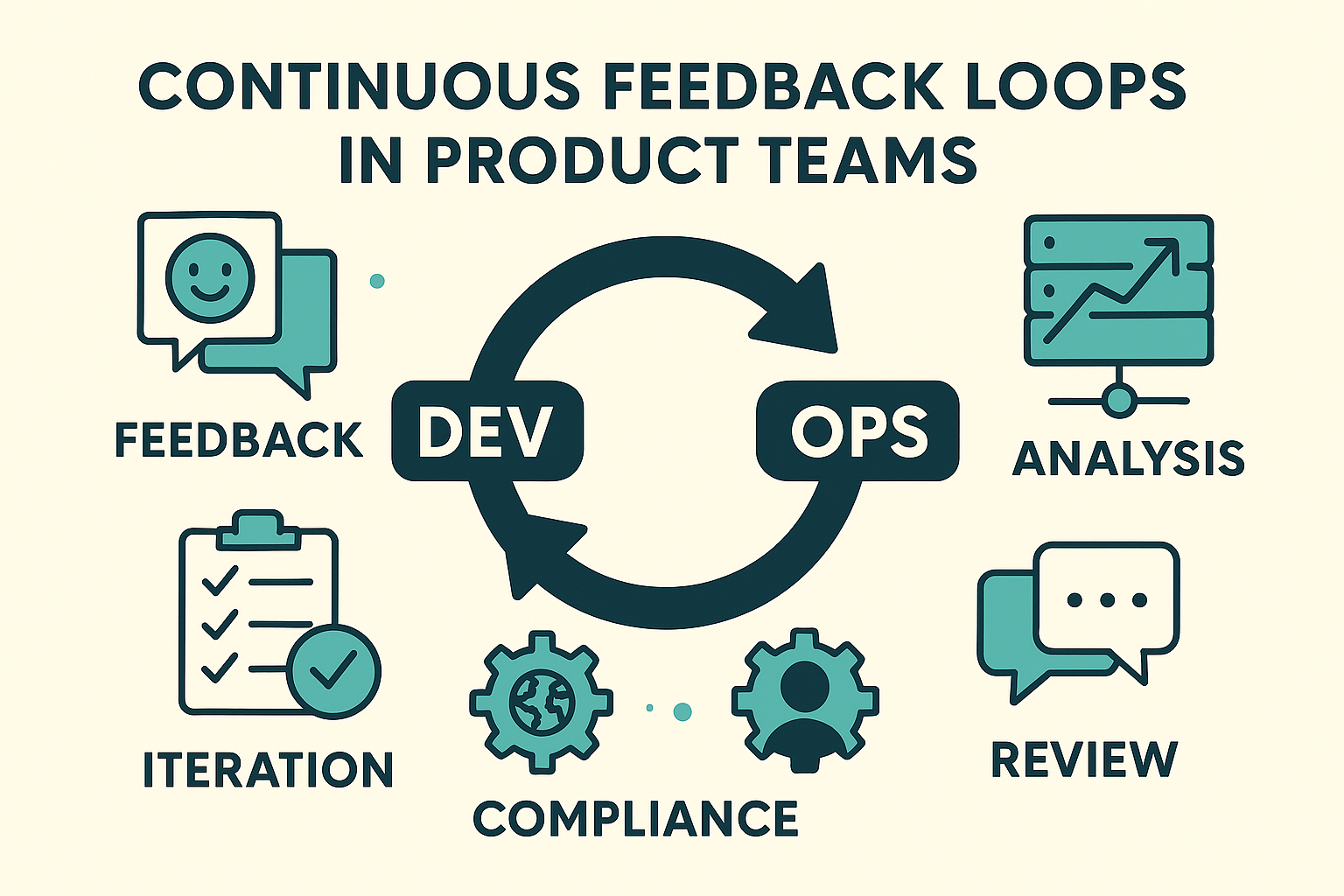Building a great product isn’t a one-time act—it’s a continuous journey of learning, adapting, and improving. At the heart of this journey lies the concept of feedback loops: short, intentional cycles of insight that guide product evolution in real time.
What Are Continuous Feedback Loops?
A feedback loop is the process of collecting input from users, stakeholders, or systems, analyzing it, and using it to drive action. When applied continuously, this cycle becomes the lifeblood of modern product teams—ensuring decisions are data-driven, user-informed, and iterative.
These loops keep product development aligned with real user needs, responsive to market shifts, and resilient to internal assumptions.
Core Feedback Sources
To build a robust loop, product teams tap into:
User feedback: Usability testing, surveys, customer interviews, support tickets.
Behavioral analytics: Heatmaps, click paths, conversion funnels, drop-off points.
Internal insights: Sales, marketing, customer success teams are often closest to user pain.
System metrics: Performance logs, downtime reports, feature usage stats.
The key is not collecting everything—but collecting the right data at the right moment.
Embedding Feedback in the Workflow
Feedback loops are most powerful when built into the daily rhythm of product teams:
During planning: Use user data and requests to shape
In development: Validate design with real users through early
Post-release: Use feature usage data and user sentiment to guide next
Agile sprints naturally support this—each sprint becomes a mini loop of build → test → learn.
Tools That Enable Fast Feedback
Several tools make real-time insights more accessible:
Analytics: Mixpanel, Amplitude, Google
Surveys and feedback: Typeform, Hotjar,
Session recordings: FullStory,
Issue tracking and forums: Jira, GitHub,
Choose tools that integrate into your workflow without slowing it down.
Cultural Shifts for Continuous Learning
Tools are just enablers. For feedback loops to thrive, the team mindset matters:
Be open to being
Value iteration over
Celebrate learning—even from
Creating a culture of curiosity and adaptability turns feedback into action, not just reports.
Conclusion
Continuous feedback loops aren’t just a best practice—they’re a competitive necessity. They bring your team closer to the user, reduce waste, and unlock smarter, faster decisions. When feedback becomes a habit, not an event, your product stays relevant—and your team stays in sync with the people it’s building for.





